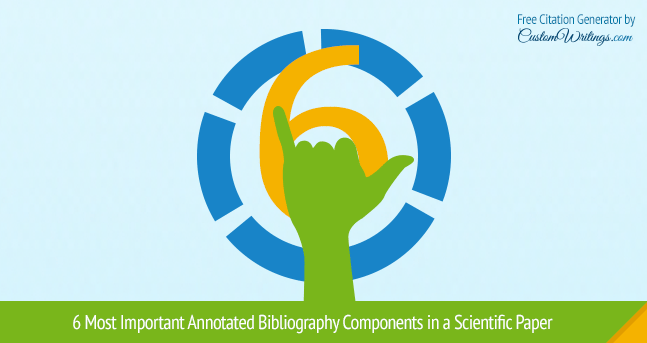 Sometimes while writing an academic or scientific paper you are required to use an annotated bibliography. If you have never encountered or used bibliography, it might be confusing at first, if the instructions are not communicated clearly.
Sometimes while writing an academic or scientific paper you are required to use an annotated bibliography. If you have never encountered or used bibliography, it might be confusing at first, if the instructions are not communicated clearly.
First of all, being able to define and identify an annotated bibliography will allow you to write your own and find your personal preferred formula for it. An annotated bibliography requires you to add an annotation to each cited work you have in your standard bibliography.
Annotations are short descriptions or evaluations of the works cited in your paper. The purpose of having them in you bibliography is to offer a general impression on how you chose the referenced articles, books or research papers and how they are relevant for your scientific or academic research. Each annotation should have 100-200 words. You should follow an academic writing style and arrange them in an alphabetical order.
The Annotated Bibliography Components:
- Citation details that follow the rules of your chosen style guide (such as MLA, APA, Harvard, Chicago etc.). Make sure you use the correct formatting and double check with the required style guides.
- The purpose of the cited paper is a short, concise sentence. You can mention the hypothesis of the research and the scope of the author.
- Your reading experience with the cited paper. Write about how easily the author makes the research understood, what the audience of the paper is and what you think about it. Don’t risk writing annotations for papers you have not actually read – the purpose of an annotated bibliography is proving that your research is well-documented.
- An evaluation of the author’s work. For an annotation to be more than a summary, you need to add your critical point of view on it. Write about the limitations of the research or what you think the weak points are.
- Conclusions of the research, if available, and how valuable they are for your own paper.
- Connect the cited work with your own research. Present how the referenced paper adds value to your research, how you have applied the author’s findings to your theory or, on the contrary, how your research contradicts the cited paper.
Steer Clear of Common Mistakes When Writing an Annotated Bibliography
- When adding annotated bibliography to a paper, you should not confuse the annotation with the abstract. They are not the same things, even though both look like a summary. An annotated bibliography offers critical description and lots of details, whereas an abstract only summarizes.
- You should not craft an annotated bibliography without having read the source carefully first. Reading and taking notes is a critical part of the process, and if you don’t do this, you risk writing incorrect information.
- Don’t confuse an annotated bibliography with a literature review. A review is incredibly detailed and extensive, whereas an annotation is more concise and shorter. Furthermore, an annotation is a standalone part of an annotated bibliography and each cited source has its own defined area within your paper.
- Formatting styles can prevent you from writing a great annotated bibliography. It might be a good idea to learn more about APA and MLA styles to be sure you’re doing everything right.
It is recommendable to add evaluative annotations to your bibliography, since this usually helps build a clearer image on how your research was constructed and how you are placing it amongst the cited works. It also provides information on how seriously researched your paper is and how your conclusions were formulated. However, there are cases where a descriptive annotation is enough to serve its purpose.
A well-structured annotated bibliography that respects the standards of the citation style guides will add value to your paper and to your overall credibility as an academic, scientist or researcher. Make sure you keep an academic tone of your scientific paper to the dot with the help of our Free Citation Generator.
